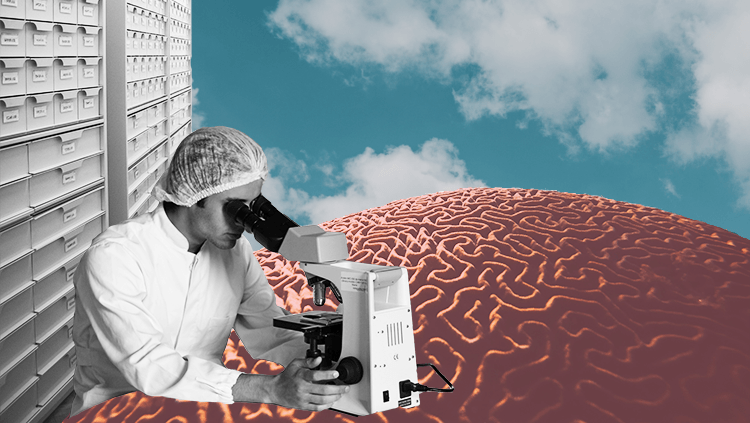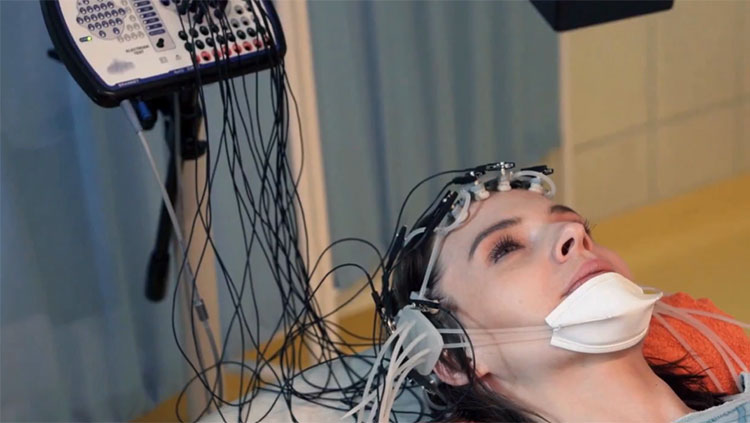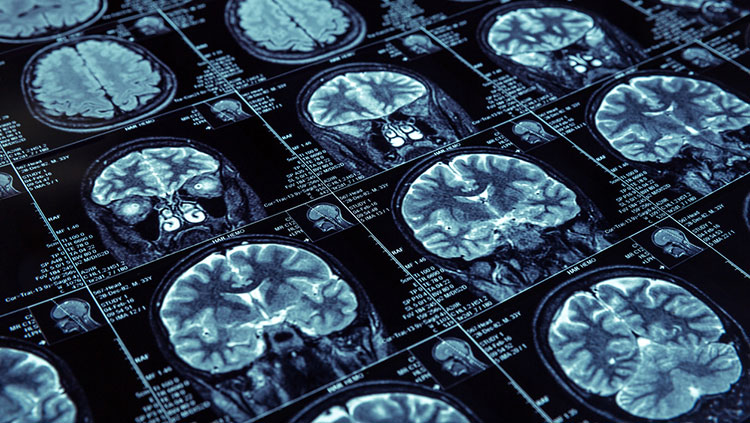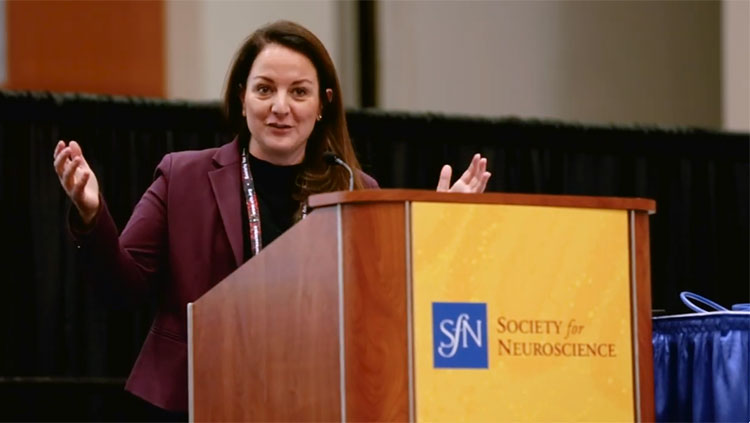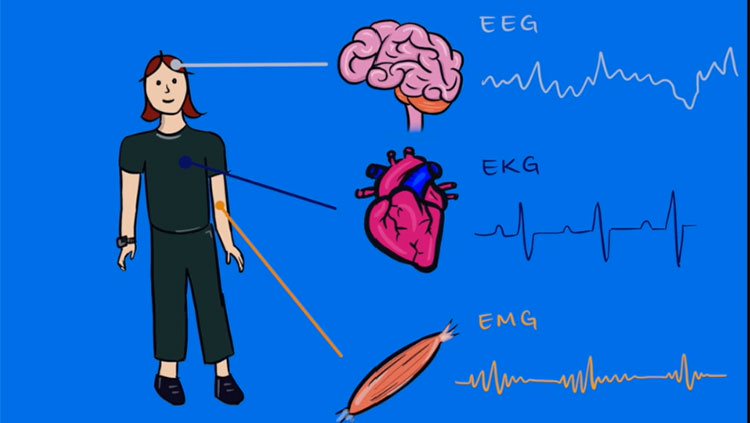A Step-by-Step Look at How Human Brains Are Prepped for Research
- Published10 Jul 2019
- Author Mirjam Guesgen
- Source BrainFacts/SfN
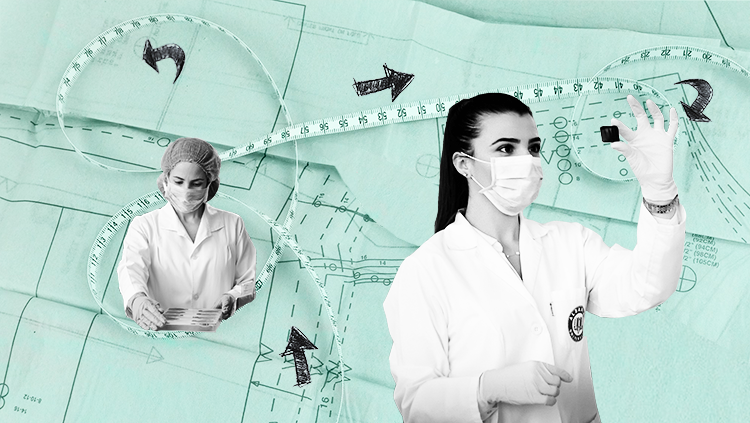
When the Calgary Brain Bank receives a donation, neuroscientist Jeffrey Joseph snaps photos before slicing, dicing, and freezing the tissue. The process, which takes about two and half hours, prepares and preserves the brains for researchers investigating neurodegenerative disorders like Alzheimer’s and amyotrophic lateral sclerosis (ALS).
Note: This article contains graphic images of a human brain that was donated to the Calgary Brain Bank for the purposes of scientific research.
Joseph first slices the brain in half, separating the two hemispheres. He places one half in formalin, a liquid solution that preserves the tissue. This half will later be sliced into to small samples for microscope slides or paraffin blocks.
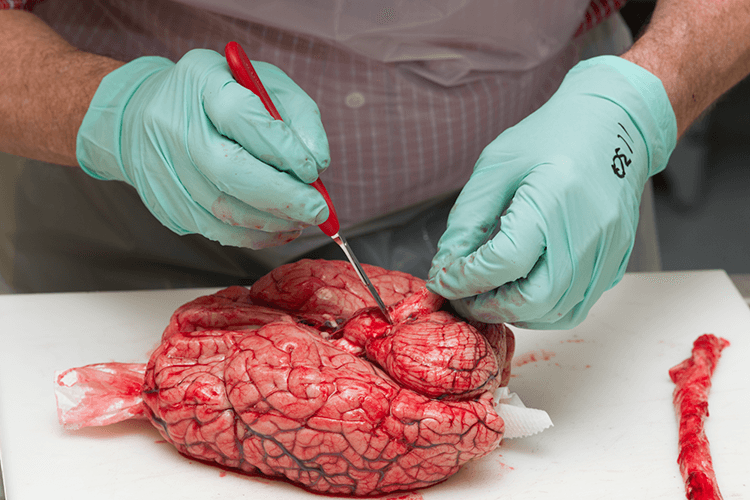
Joseph carefully slices and arranges cross-sections of the second half of the brain for the freezing process. He does all the preparation work with the help of only a single laboratory technician.
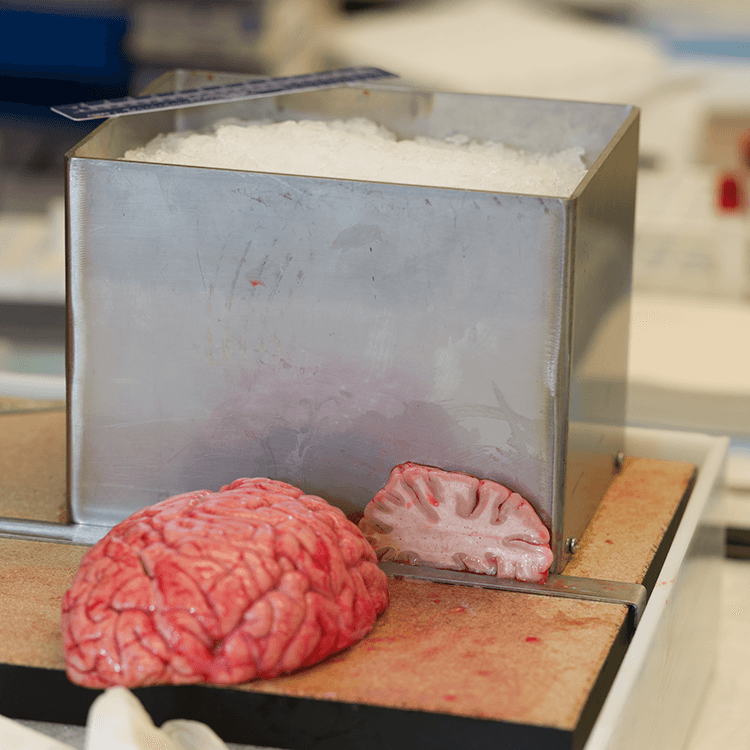
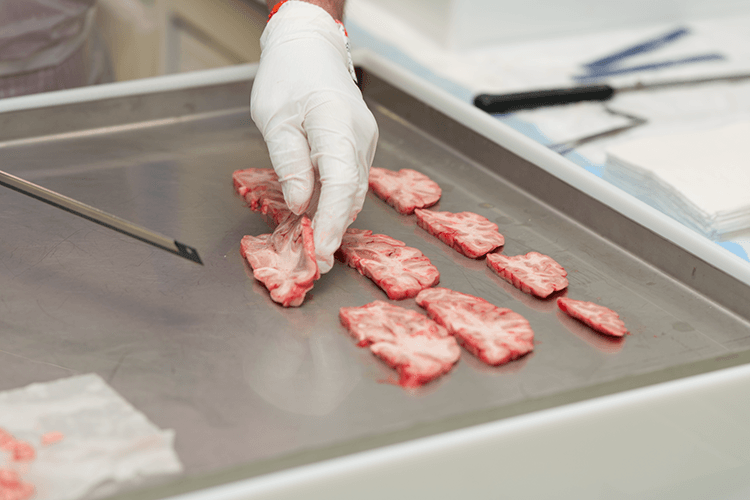
Specific areas of these larger slices are further diced into cranberry-sized pieces. The bank only stores areas of the brain associated with dementia or movement disorders, including the hippocampus and areas of the neocortex.
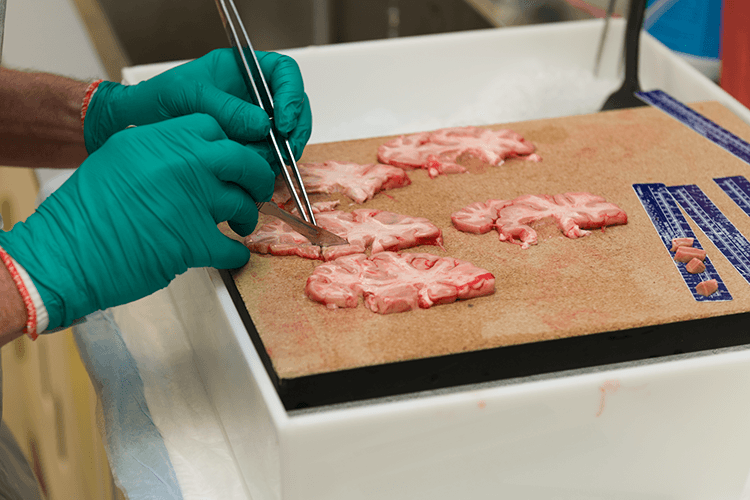
Each cranberry-sized piece of brain is placed between two metal plates for freezing. The plates keep the pieces flat and prevent them from becoming brittle.
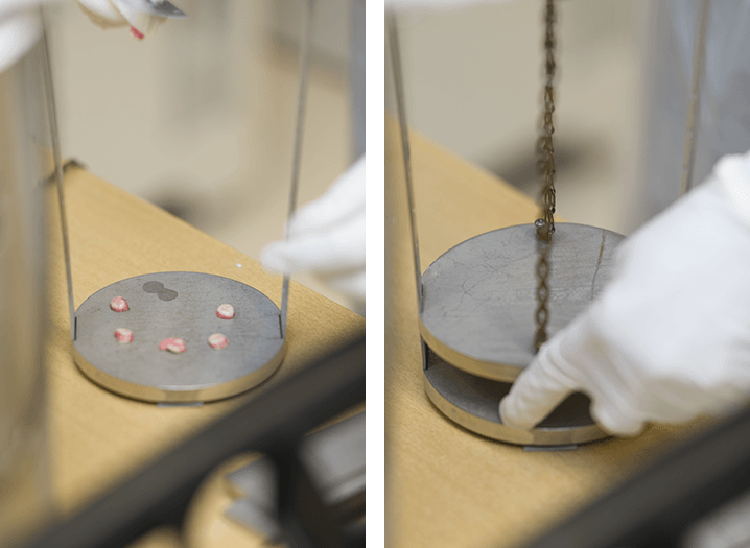
Joseph slowly lowers the metal plates into liquid nitrogen for freezing.
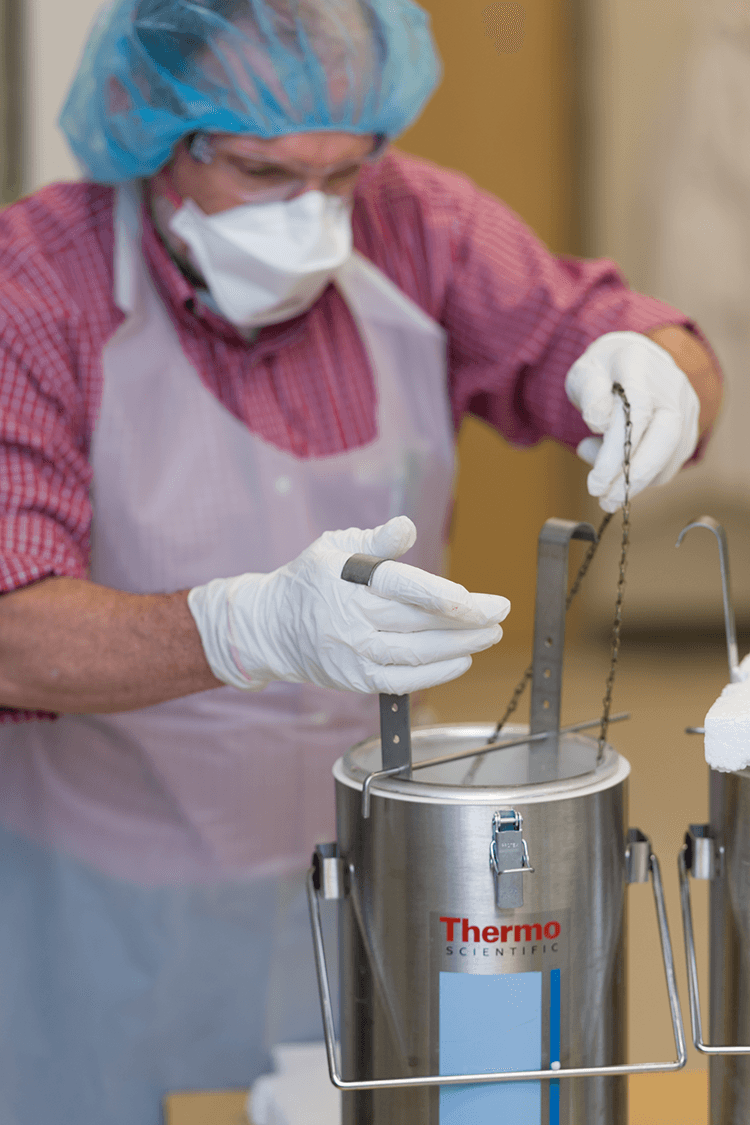
After 30 seconds, he removes the samples and puts them in small plastic vials to be stacked in trays in the freezer. Scientists interested in using a sample for their research must fill out a request form and submit a proposal explaining how and why they want to use the tissue.
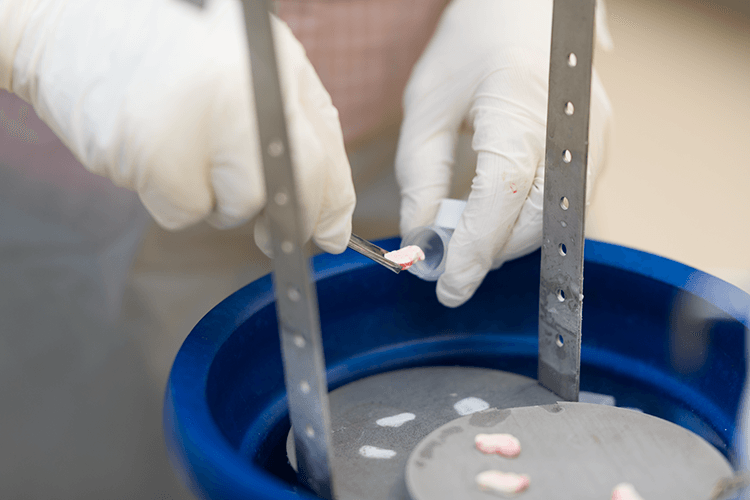
CONTENT PROVIDED BY
BrainFacts/SfN
What to Read Next
Also In Tools & Techniques
Trending
Popular articles on BrainFacts.org



